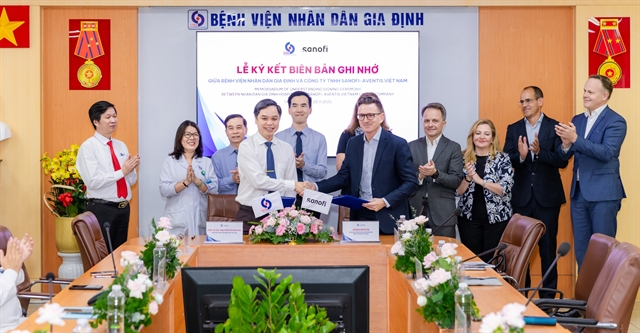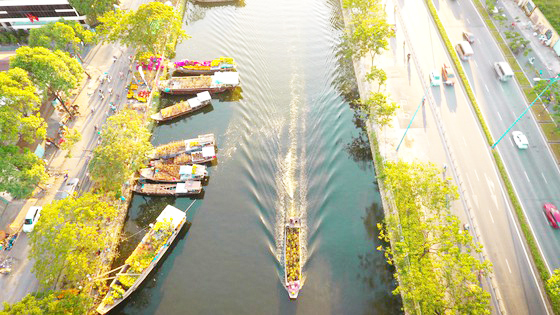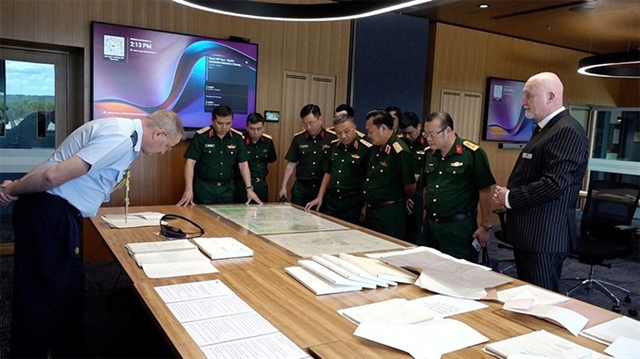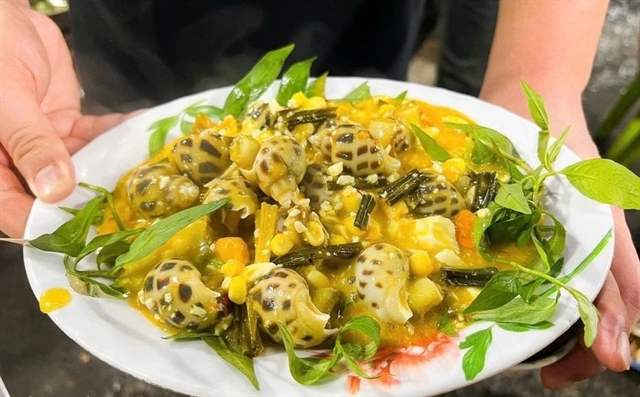 Society
Society

HCM City needs to assess the features of its cultural and architectural identity so that it can create viable urban public spaces, experts said at a recent seminar.

|
| The river-based life of people in HCM City’s District 8. — Photo www.sggp.org.vn |
HCM CITY — HCM City needs to assess the features of its cultural and architectural identity so that it can create viable urban public spaces, experts said at a recent seminar.
The seminar, which discussed solutions for the development of public cultural spaces, attracted architectural and cultural experts as well as local leaders. It was organised by the municipal Party Committee's Propaganda Department, the Council for Theory, Literature and Arts Criticism and the Association of Architects.
Public cultural spaces are common places for community activities that all residents have the right to freely access and use such as squares, parks, pedestrian streets, surface water, spaces along the riverbank, and sidewalks.
They play an important role in strengthening social cohesion and improving the quality of life and physical and spiritual health of residents.
“The public space shows the city’s cultural identity and civilisation,” general secretary of the city’s Association of Historical Sciences, Nguyễn Thị Hậu, said.
The city government should develop solutions on public space development to bring the most practical benefits to the community in a humane way, she said.
The city has been developed around rivers and canals, so its typical identity is a river-based culture.
Building public cultural spaces should promote the preservation of traditional intangible cultural heritage practices. The design for public cultural spaces should combine tradition and modernity, experts said.
Existing water bodies such as Sài Gòn River or Thị Nghè Canal have been an integral part of the city’s development, making them ideal spaces to promote cultural public activities, architect Phạm Phú Cường said.
Nguyễn Tấn Vạn, former chairman of the city’s Association of Architects, said developing public spaces along rivers and canals would create a unique identity for the city.
Sharing the same idea, architect Nguyễn Anh Tuấn of the city's Department of Planning and Architecture, said that the landscapes along rivers and canals have the potential to become the backbone of urban cultural activities.
“The city should create public spaces associated with trade, entertainment and cultural activities on rivers and canals.”
More efforts and solutions are also needed to prevent pollution and improve the landscape along rivers and canals, he said.
Dr. Lê Hồng Phước from the HCM City University of Social Sciences and Humanities said the city should create a public space for đờn ca tài tử (Southern folk music) which has been recognised by UNESCO as an intangible cultural heritage.
Đờn ca tài tử performances could be organised at existing public spaces in the city such as Book Street on Nguyễn Văn Bình Street in District 1.
The city should also set up a street to serve as a place for performing traditional arts, such as Huyền Trân Công Chúa Street in District 1, he said.
Challenges
Urban planning calls for 7sq.m of public space per capita but the current public space in the city is just 1.06sq.m per person.
Most existing public spaces are located in inner districts, while there are no or only a few public spaces in outlying districts.
More trees and water surface, and lights for existing public parks are needed, experts said.
The city should also learn from other countries’ experiences in building public space and consult leading architects.
Hậu said clearing illegal encroachment on pavements and roads in the city is needed. However, the city should research street planning to manage streetside vendors on pavements and roads, instead of clearing all of them because “street trading is a typical feature that attracts tourists".
Phan Nguyễn Như Khuê, head of the municipal Party Committee's Propaganda Department, said the city was considering building public spaces for cultural activities on Nguyễn Thượng Hiền Street and an area around Hồ Con Rùa (Turtle Lake) in District 3.
At Hồ Con Rùa, it plans to organise đờn ca tài tử performances every Saturday night, art performances and entertainment programmes for children every Sunday night, and musical fountain, water puppetry shows and exhibitions on other days.
The city will also develop an annual lantern festival in District 8.
Proposed solutions, ideas and suggestions at the seminar will be recorded to study in depth. These will help the city prepare a clear roadmap for building public spaces, he added. — VNS




